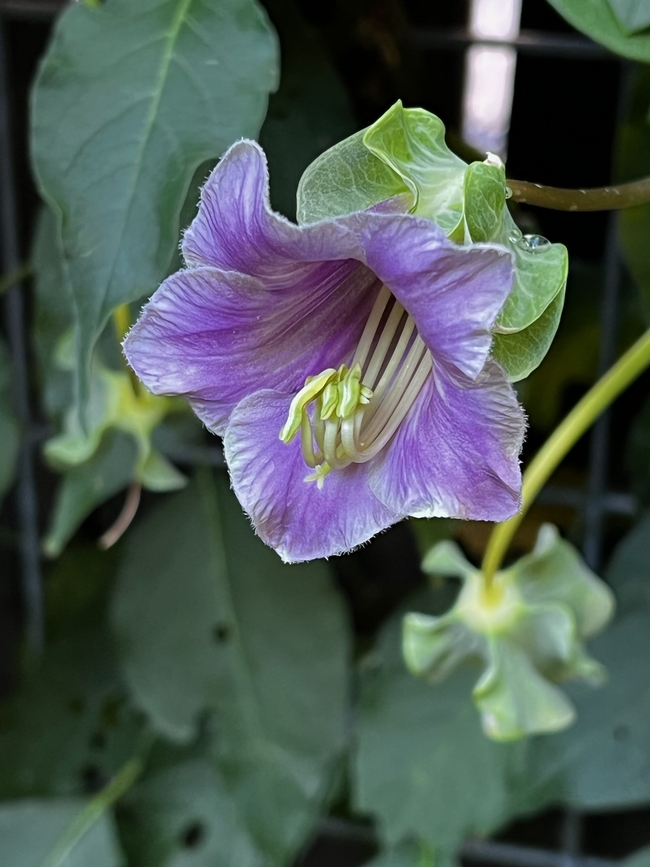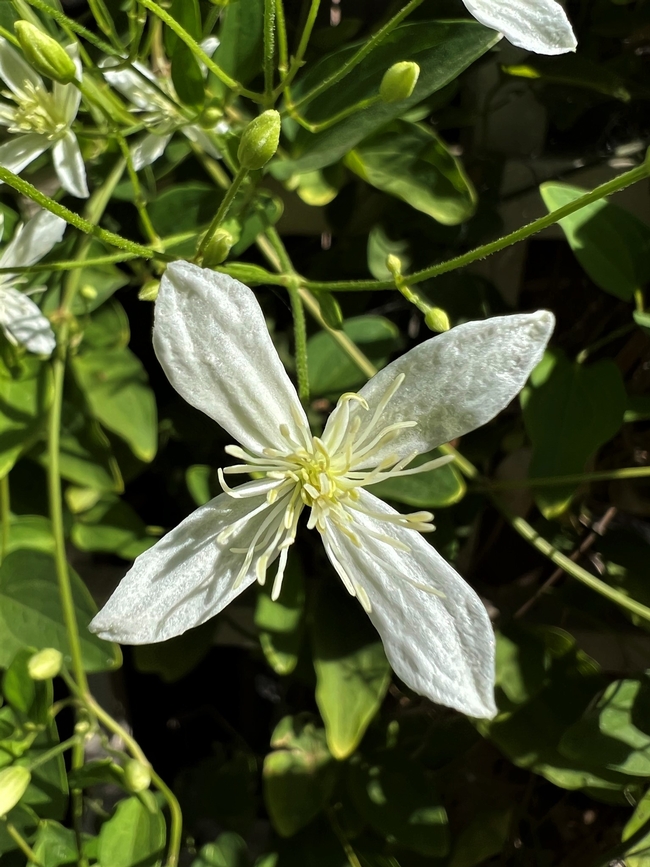Mystery Plant Identification
A couple of years ago, I was in need of a flowering vine which could handle morning shade and afternoon sun. I selected a Cobaea scandens from Annie's Annuals and Perennials. I was enchanted by the photos on the description of the plant, as well as it's whimsical common name, “Cup and Saucer Vine”. I planted the vine and excitedly waited for the “storybook year-round blooms”. And, I waited. I waited through spring, and through summer, with nary a bloom to be had.
Finally, near the end of summer, my plant began to bloom. It exploded in a profusion of blossoms; climbing up the trellis, and surpassing that height to wend up my neighbor's Italian cypress trees. The surprise, however, was that this was definitely NOT Cobaea scandens. Either by mistake, or through mischief, the identification tag on my plant had been switched at the nursery. Now, instead of huge purple and lavender tulip-shaped blooms, I had tiny, white, star-shaped flowers. I had no idea what the plant was, until a friend introduced me to the plant identifier feature iniPhone photos. With this feature, one can photograph a flower and swipe up, to reveal a “Look Up Plant” option. What a cool and useful tool!
My vine is actually a Clematis terniflora, commonly known as Sweet Autumn Clematis. One of the benefits of this clematis is that it blooms in late summer through fall, when many other flowering plants have already faded. It is a very fast-growing vine, reaching up to 20 feet in height. The masses of creamy white flowers are sweetly fragrant. When the flowers fade, they leave behind a spidery web of seed heads, which I find attractive. A native of China, Korea and Japan, Clematis terniflora flowers bloom on new growth. For this reason, and because the vine grows so aggressively, it's important to prune heavily after flowering, or in early spring.
According to Sunset Western Garden Book, Clematis terniflora resembles, and is often mistaken for, Clematis paniculata. However, Clematis paniculata, is a completely different species, native to New Zealand.
Perhaps, one day I will plant a Cup and Saucer Vine. But, for now I am happy with my accidental clematis, with its clouds of sweet, white, autumn flowers.





Posted by Karen Metz on November 19, 2022 at 6:42 AM